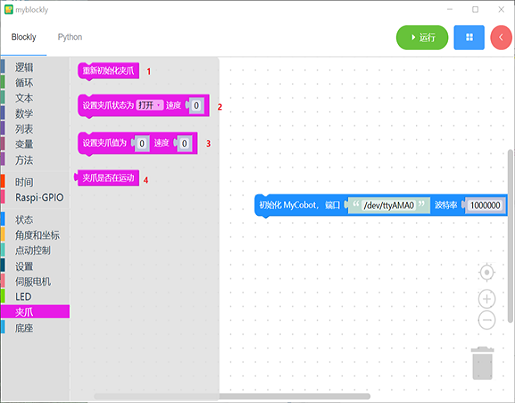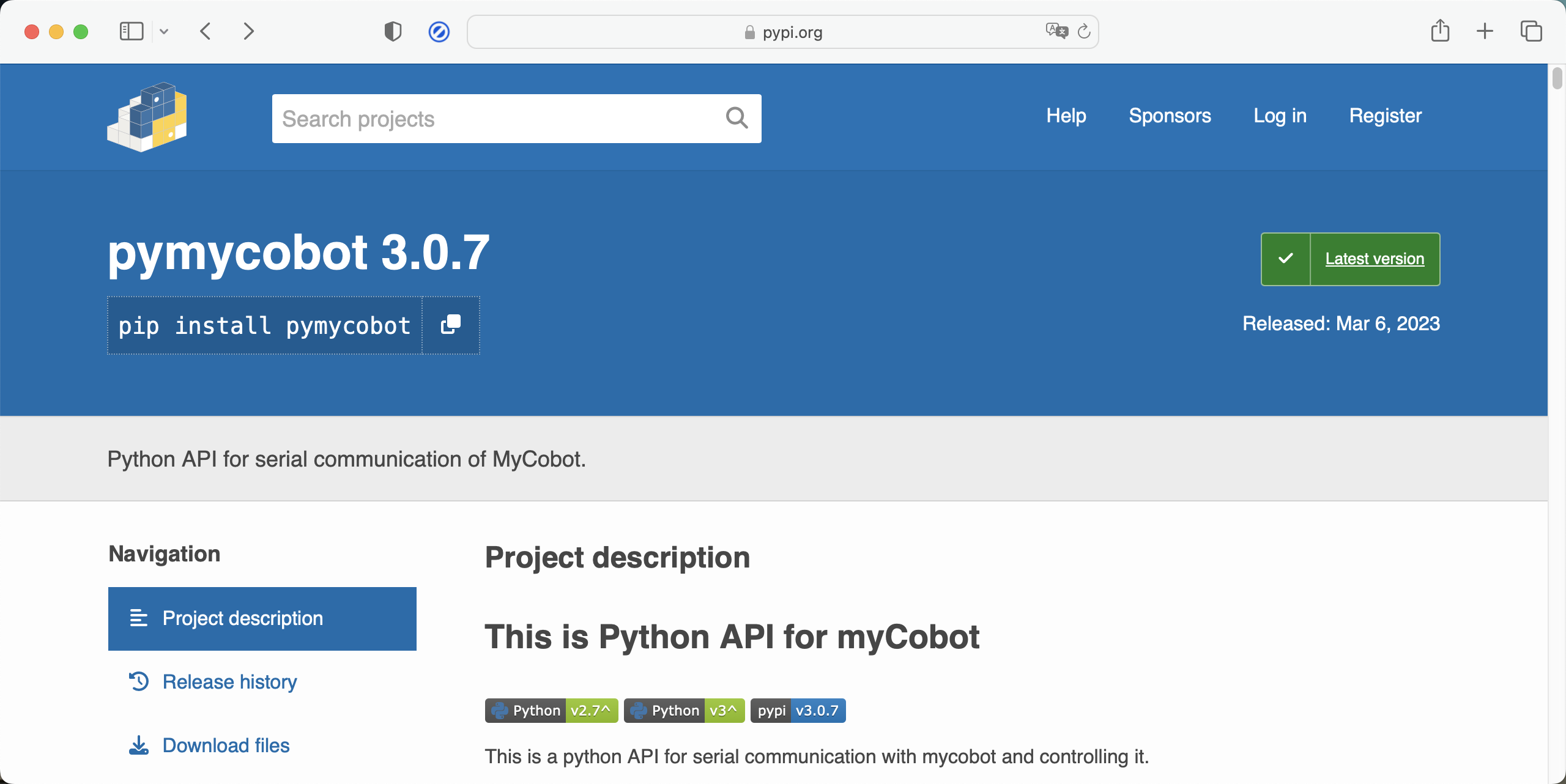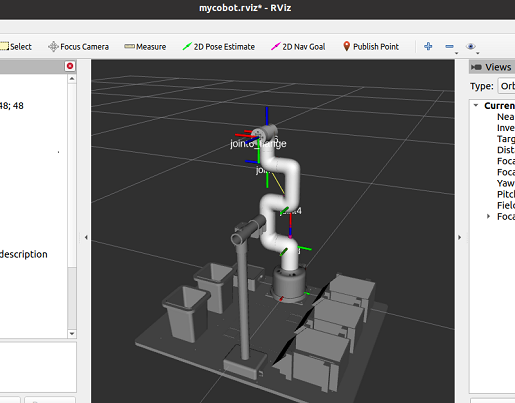Development Environment Construction
1 Using Environment
The myCobot 280 Arduino is developed and used based on PC and development board. There is no built-in system inside the robotic arm, so it is necessary to connect the robotic arm with PC and development board during use. Remember to prepare a PC and development board.
2 Development Environment
Here are the development environments supported by myCobot 280 Arduino. Read to download and install.
2.1 Arduino MKR WiFi 1010 and Arduino MEGA2560
- 2.1.1 Development based on myBlockly and UIFlow, which are both graphical programming software and visualization tools. Users can create programs dragging modules, the process of which is very similar to building blocks. After installing myblockly and UIFlow , refer to myblockly use cases and UIFlow use cases.

2.1.2 Development based on Python. Our robots support Python and the development of the Python API library has become increasingly complete. The joint angle, coordinates, gripper and other aspects of the robot can be controlled via Python. Refer to installing the python environment , for more information.

2.1.3 Development based on Arduino. Arduino is an easy-to-use, open-source electronic prototyping platform that includes hardware (various Arduino-compliant development boards) and software (Arduino IDE and related development kits). The hardware part (or development board) consists of a microcontroller (MCU), flash memory (Flash), and a set of general-purpose input/output interfaces (GPIO), etc. It can be understood as a microcomputer motherboard. The software part is mainly composed of Arduino IDE on the PC side, related board support packages (BSP) and rich third-party function libraries. Users can use Arduino IDE to easily download the BSP related to the development board and the required function library to write program.It is an open source robot control library developed by our company, which can be used only after using the robot developed by our company. Using this library, you can control our robot through Bluetooth, WiFi, serial port, etc. It also supports functions such as external sensors, IIC communication, and LED lights. You can DIY different application scenarios according to your own needs, or you can refer to the MiniRobot sample code or control cases such as angles, coordinates, and grippers we provide. The MiniRobot sample code includes Bluetooth, WiFi, drag teaching, distance sensor and other control-related content. Refer to simple use of Arduino and the API for more information.

2.1.4 Development based on ROS. ROS is open-source and is a post operating system, or secondary operating system, used for robot control. With the use of ROS, the simulation control of the manipulator can be realized in the virtual environment. The robotic arm can be visualized through the rviz platform, and operate the robotic arm in a variety of ways. It can also be used to plan and execute the robotic arm's action path through to freely control the robotic arm. After installing the ROS development environment , refer to use cases and use of moveit for more information.

2.2 Arduino UNO
- 2.2.1 Development based on Arduino. Arduino is an easy-to-use, open-source electronic prototyping platform that includes hardware (various Arduino-compliant development boards) and software (Arduino IDE and related development kits). The hardware part (or development board) consists of a microcontroller (MCU), flash memory (Flash), and a set of general-purpose input/output interfaces (GPIO), etc. It can be understood as a microcomputer motherboard. The software part is mainly composed of Arduino IDE on the PC side, related board support packages (BSP) and rich third-party function libraries. Users can use Arduino IDE to easily download the BSP related to the development board and the required function library to write program. At the same time, on github, we have an open source program MyCobotBasic. ControlRobot.ino in the case is a sample program of Uno, which can control coordinates, angles and grippers. Users can develop according to their own needs on this basis, such as making the robot dance and so on.Refer to simple use of Arduino for more information.

3 Updating Firmware
The basic firmware of myCobot 280 Arduino need to be updated via myStudio. MyCobot 280 Arduino has built-in myStudio, which can be used directly.
Go to the address below for more information about myStudio: